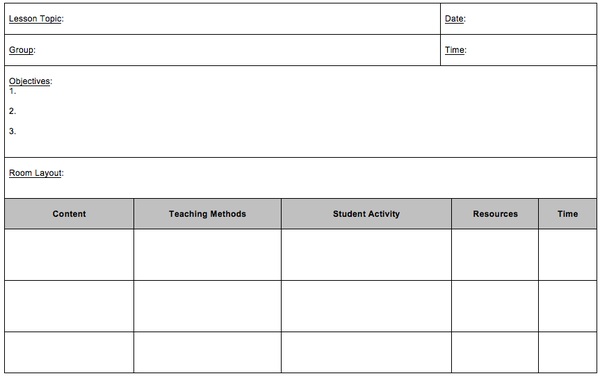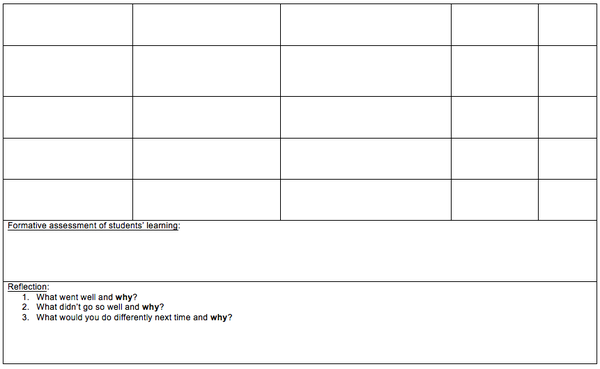Develop elements of a session
| Learning and Teaching in Practice | |
|---|---|
| Module 4: Planning, delivering and critiquing a teaching session | |
| Planning a session | Introduction | Design active, experiential and deep learning strategies | Develop elements of a session | Summary |
In the previous section we looked at one aspect of the planning process in detail: designing learning activities for active, experiential and deep learning. Now you need to consider different facilitation methods before drawing up your initial ideas for a lesson plan for one session. In this section we will look at how to put everything you have learned so far into practice and develop an effective session plan.
|
Brett provides the teachers in his teaching team with a simple session planning template. I encourage my colleagues to use a session plan like this - it helps them develop their teaching strategies more effectively, and it's important if I'm going to work with them on this. Plus if they are sick someone else can cover for them much more easily!
|
Brett's planning template
Note the column set aside for the learner activity in this lesson plan format:
Page 2 includes space for details of the formative assessment as well as focus questions for your own reflection after the session:
If you find this lesson plan format useful, you can download a template in MS Word format from within the Moodle course: http://moodle.op.ac.nz/mod/resource/view.php?id=169854
Explore the following links to examples of learning activities.
|


